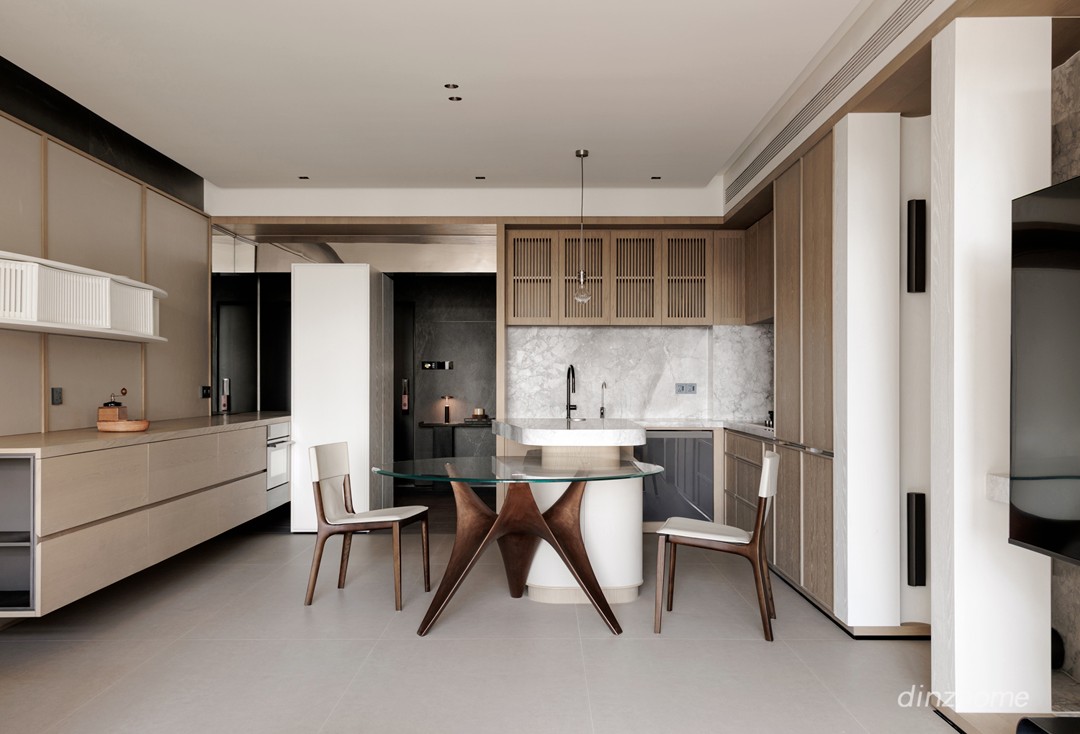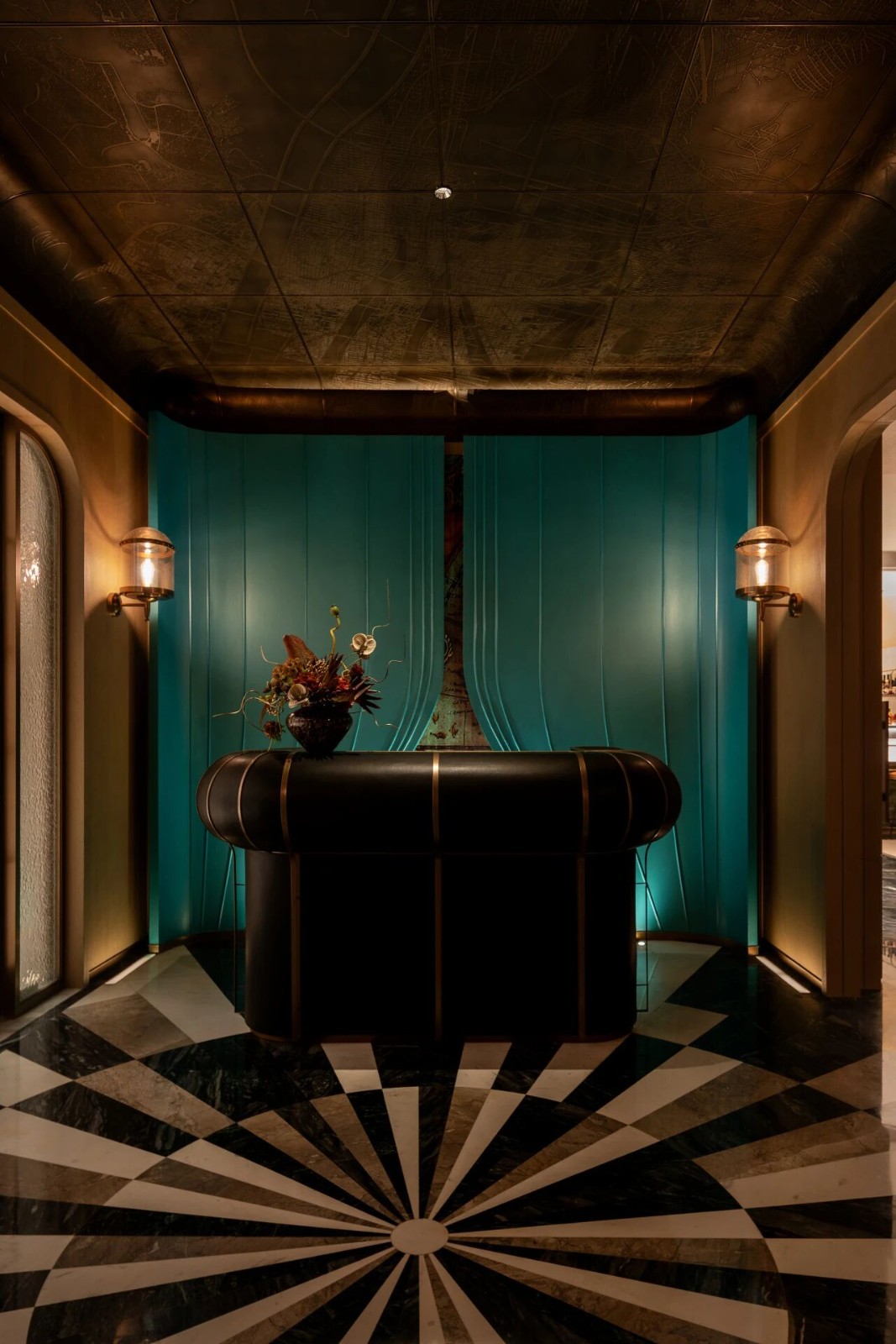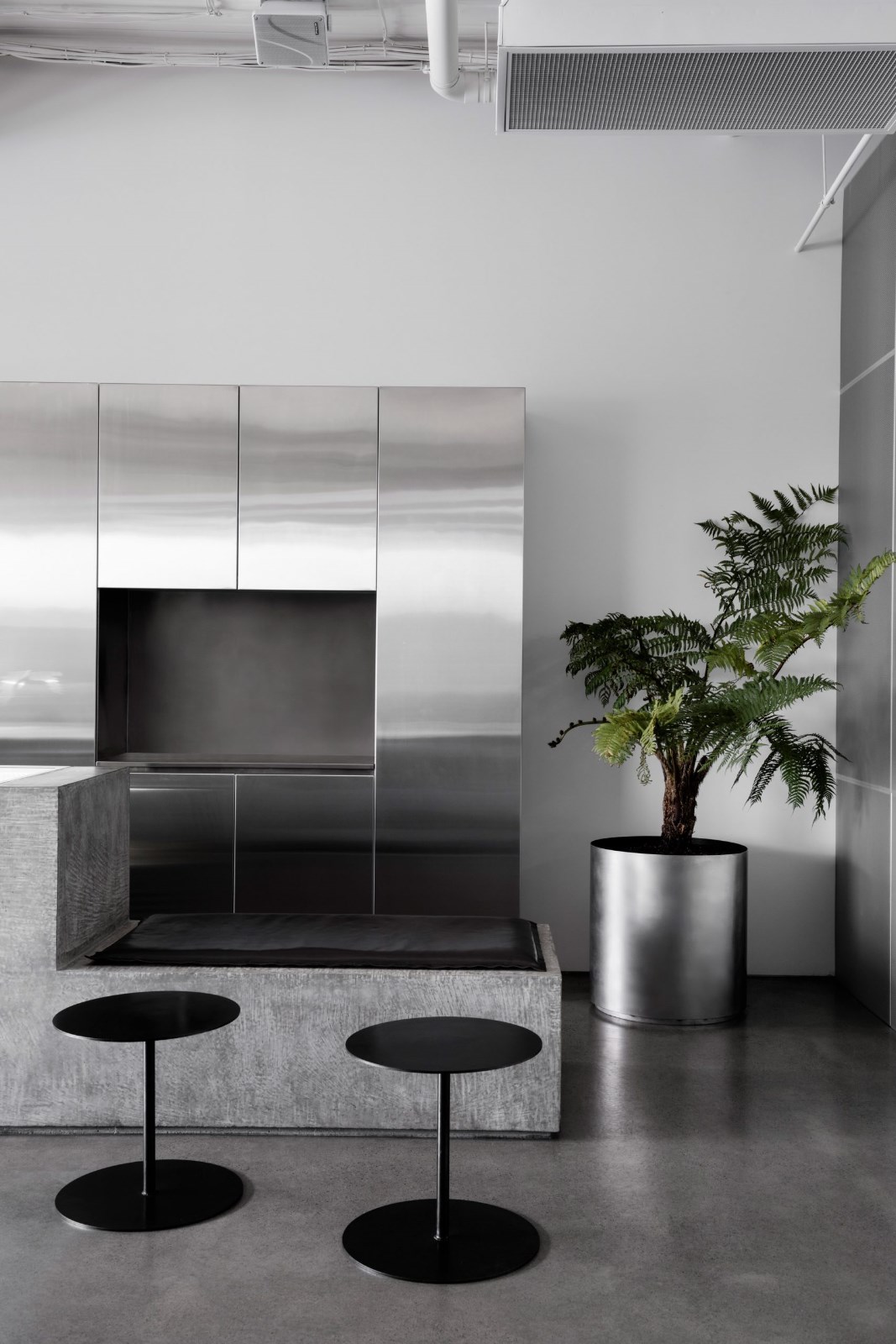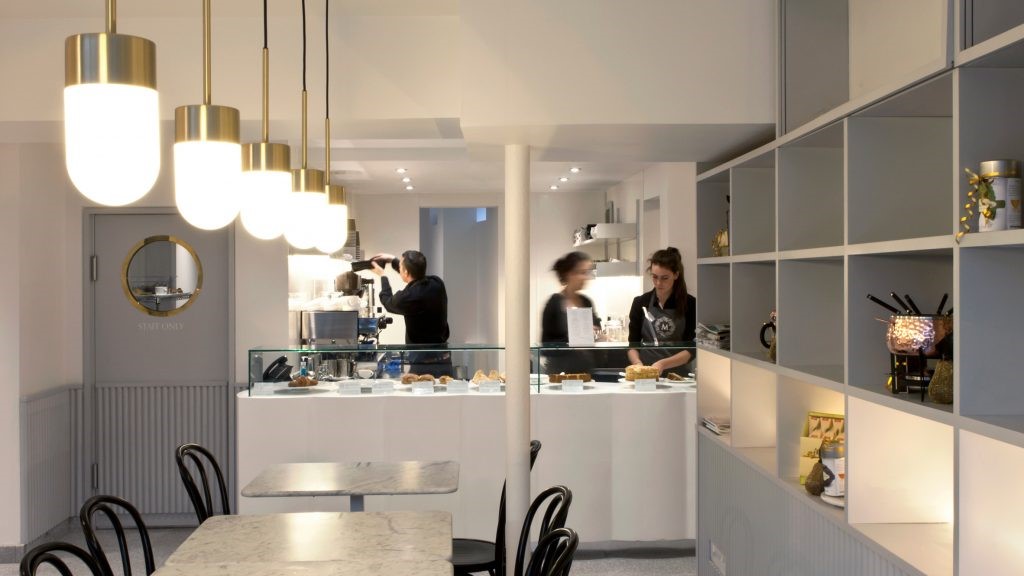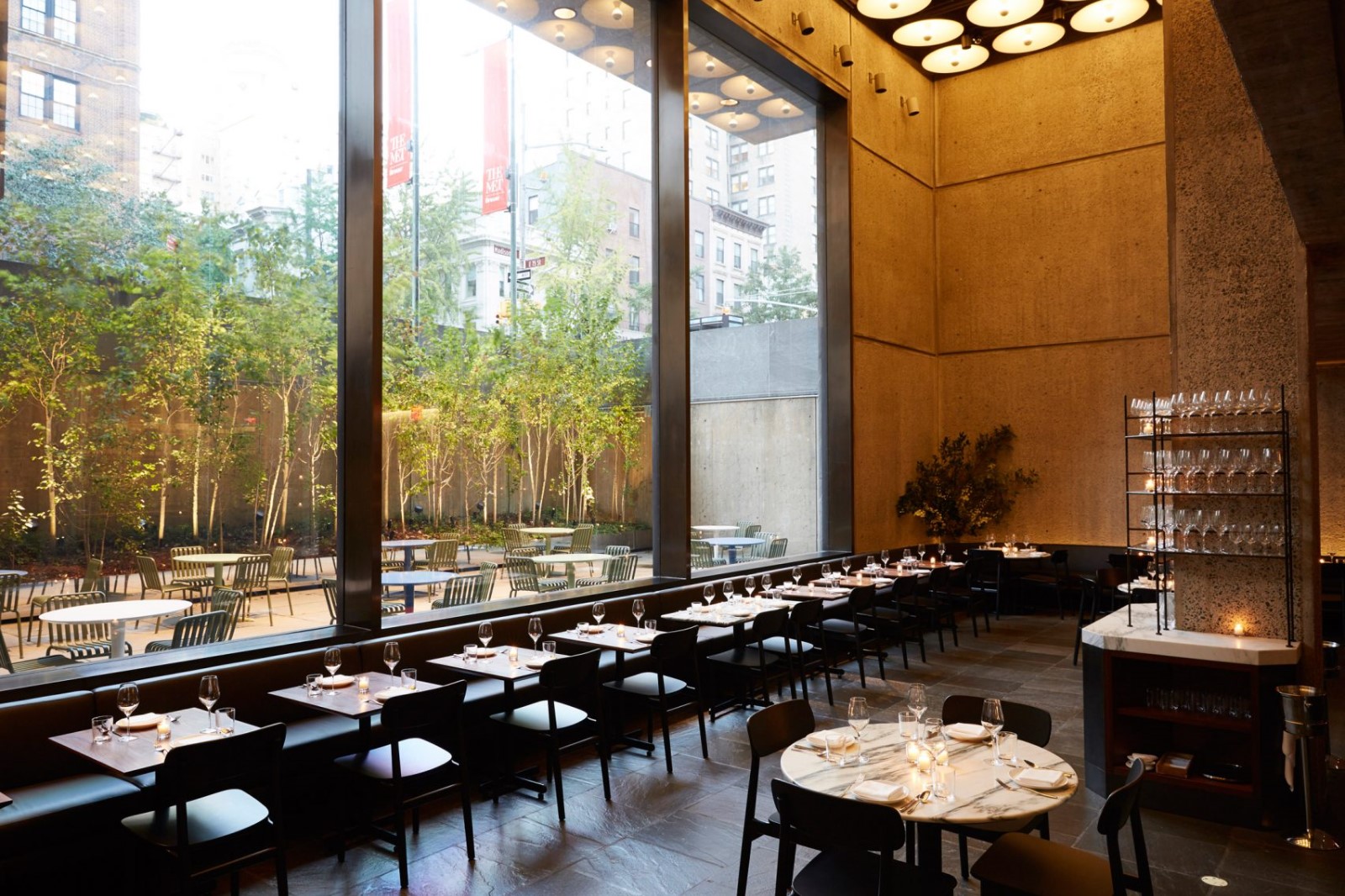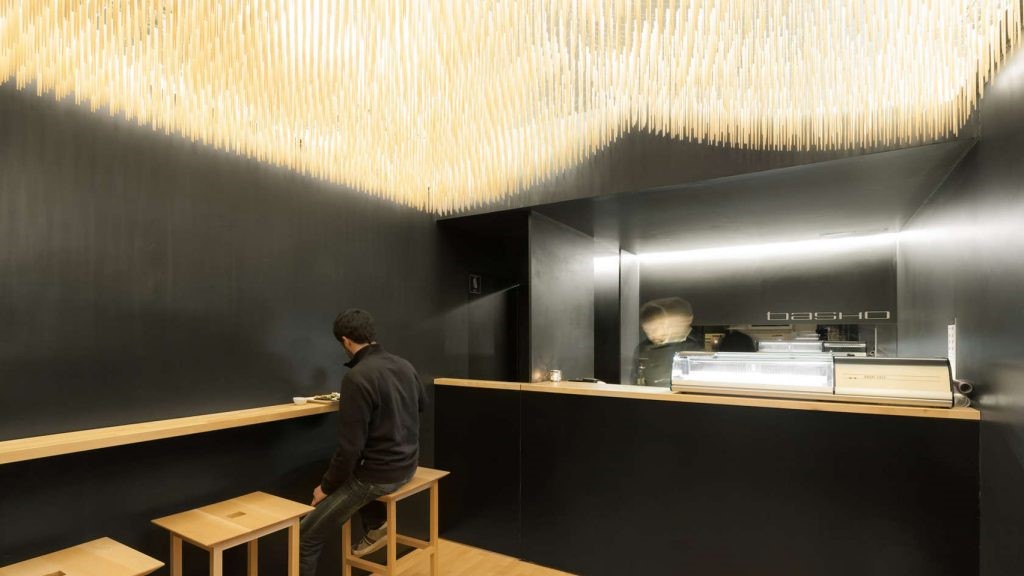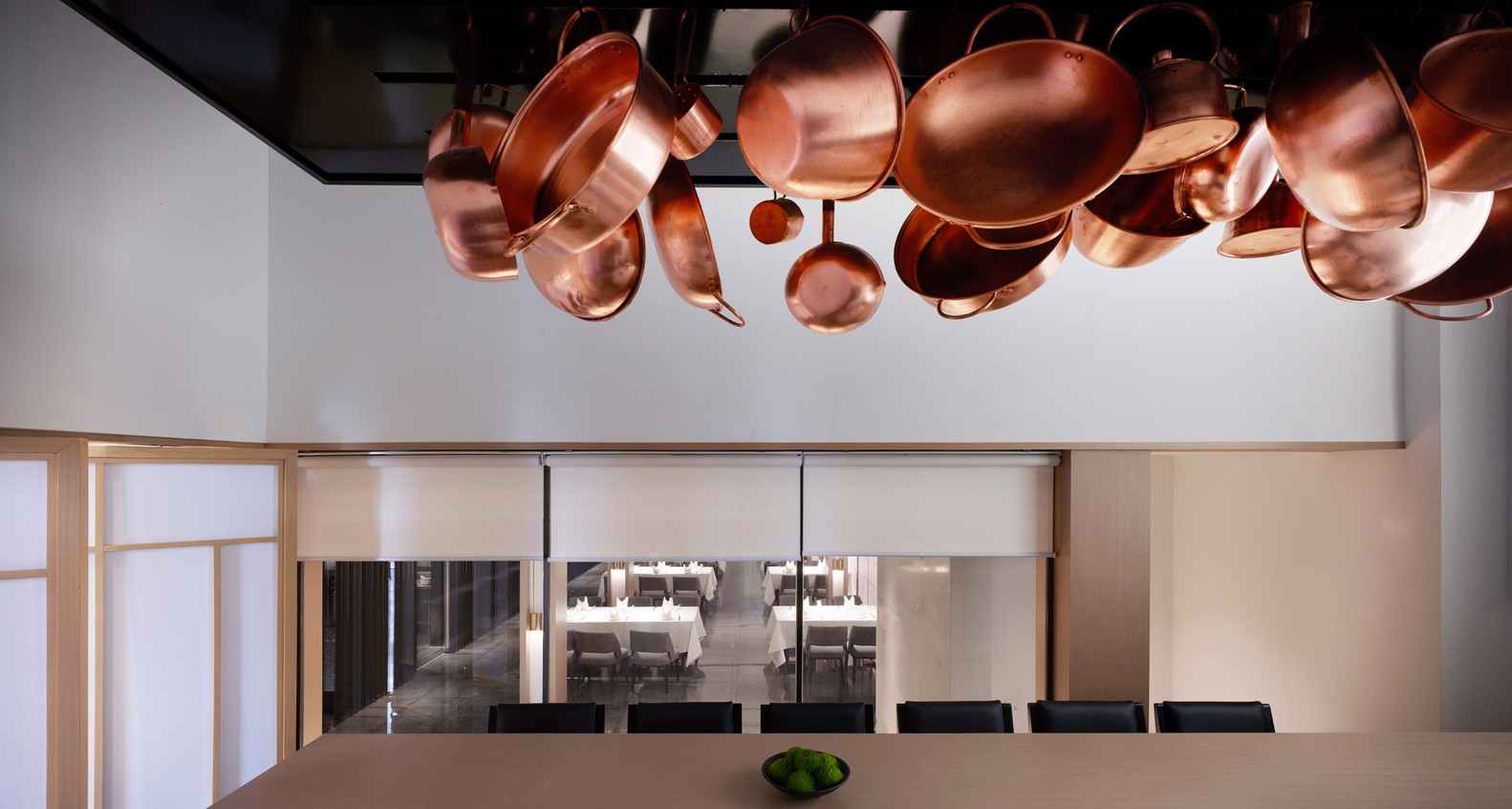深圳 EMBER 餐厅融合了传统的日式室内设计与现代设计 首
2022-06-17 23:04


Located in the business district of Shenzhen, EMBER is China’s first restaurant by acclaimed Japanese chef Kentaro Nakahara whose wagyu dishes have elevated Japanese yakinuku barbecue to fine-dining status. Interior design practice Nature Times Art Design have channelled Nakahara’s masterful fusion of Japanese, Korean and American culinary traditions into an immersive space informed in equal measure by traditional Japanese interiors, Wabi-Sabi principles and contemporary design. Austere yet elegant, the space stands out for its naturalness, purity and calmness in reflection of the menu’s star ingredient, Wagyu, the most prized beef in the world known as much for its marbling, tender texture and luxurious taste, as for the stress-free environment that the cattle are raised in. Work sharing on RUSHI platform was prohibited from being reposted for business 位于深圳商业区的 EMBER 是中国第一家由日本名厨中原健太郎主理的餐厅,他的和牛菜肴将日本烤肉提升到高级餐厅的地位。室内设计实践 Nature Times Art Design 将 Nakahara 对日本、韩国和美国烹饪传统的巧妙融合引导到一个身临其境的空间,同时以日本传统室内设计、侘寂原则和现代设计为基础。朴素而优雅,这个空间以其自然、纯净和平静而脱颖而出,反映了菜单的明星成分和牛,世界上最珍贵的牛肉以其大理石花纹、柔软的质地和奢华的味道而闻名,至于压力-饲养牛的自由环境。 -如 室 网 作 品 分 享 禁 止 转 载 商 用


Photography by HereSpace.


Photography by HereSpace.


Photography by HereSpace.


Photography by HereSpace.


Photography by HereSpace.


Photography by HereSpace.


Photography by HereSpace.


Photography by HereSpace.
A self-taught butcher and beef connoisseur, Nakahara gained recognition with his high-end version of yakiniku – the Japanese version of Korean barbeque thats closely associated with beer-soaked grill pubs and cheap cuts of meat – at his Tokyo wagyu-only grill restaurant Sumibiyakiniku Nakahara and later on with the more casual Henrys Burger. Over the last few years, Nakahara has been spreading his unique culinary style beyond the borders of Japan with EMBER constituting his third international outpost. Wrapped in glass and black steel, with only a discrete bronze logo signalling its identity, the restaurant’s sombre, sparse exterior conveys Nakahara’s no-nonsense, detailed-focused culinary philosophy. Stepping inside, through an all-black reception vestibule, visitors are immersed into a peaceful, retreat-like environment that flies in the face of the rambunctious, beer-soaked ambience of most yakiniku restaurants. In fact, by segmenting the dining area into separate rooms, from private booths to larger communal tables, EMBER feels more like a private house than a public restaurant. Connected by intersecting corridors, this configuration purposefully recalls the small shops that populate Tokyos streets.Work sharing on RUSHI platform was prohibited from being reposted for business 作为一名自学成才的屠夫和牛肉鉴赏家,Nakahara 在他的东京和牛专用烧烤餐厅凭借其高端版本的烤肉(日本版的韩国烧烤与啤酒浸泡的烧烤酒吧和廉价肉块密切相关)获得了认可Sumibiyakiniku Nakahara 和后来更休闲的 Henrys Burger。在过去的几年里,Nakahara 一直在将他独特的烹饪风格传播到日本以外的地区,EMBER 是他的第三个国际前哨。餐厅用玻璃和黑钢包裹,只有一个离散的青铜标志表明其身份,餐厅阴暗、稀疏的外观传达了 Nakahara 严肃、注重细节的烹饪理念。走进里面,通过一个全黑的接待前厅,游客们沉浸在一个宁静的、隐居的环境中,与大多数烤肉餐厅喧闹、啤酒浸泡的氛围相对。事实上,通过将用餐区分割成单独的房间,从私人包间到更大的公共餐桌,EMBER 感觉更像是私人住宅,而不是公共餐厅。通过相交的走廊连接,这种配置有目的地让人想起东京街道上的小商店。-如- -室 网 作 品 分 享 禁 止 转 载 商 用


Photography by HereSpace.


Photography by HereSpace.


Photography by HereSpace.


Photography by HereSpace.


Photography by HereSpace.


Photography by HereSpace.


Photography by HereSpace.


Photography by HereSpace.


Photography by HereSpace.


Photography by HereSpace.


Photography by HereSpace.


Photography by HereSpace.


Photography by HereSpace.


Photography by HereSpace.


Photography by HereSpace.


Photography by HereSpace.
Inspired by Japanese-style rooms, the minimalist interiors feature woven straw surfaces that allude to tatami mats, sliding doors that are both solid and translucent, and sparse decoration, while the use of natural materials and rough textures are informed by Wabi-Sabi’s aesthetic concept. Roughly-textured steel panels, sandblasted stone walls and natural rattan surfaces are artfully juxtaposed with semi-transparent gold screens, wood veneers, and leather upholstery imbuing the spaces with warmth despite the austere sensibility. Illuminated gold leaf-swathed transoms add to the poetic interplay of light and shadow, while in some rooms, illuminated ceiling panels can be raised and lowered to dynamically simulate the sky. In combination with the interior’s ascetic aesthetic, the atmospheric lighting design turns the restaurant into a meditative place of contemplation and reflection, as do a series of stone sculptures, minimalistic ink-wash paintings and a Zen waterscape paired with a pine bonsai next to the bar counter.Work sharing on RUSHI platform was prohibited from being reposted for business 受日式房间的启发,极简主义的内饰采用草编表面,暗示着榻榻米垫,实心和半透明的推拉门以及稀疏的装饰,而天然材料和粗糙纹理的使用则受到侘寂美学理念的启发.粗糙纹理的钢板、喷砂石墙和天然藤条表面巧妙地与半透明的金屏风、木饰面和皮革内饰并列,尽管朴素的感觉却为空间注入了温暖。带照明的金箔横梁增加了光影的诗意相互作用,而在某些房间中,照明天花板可以升高和降低以动态模拟天空。结合室内的苦行美学,大气的灯光设计将餐厅变成了沉思和反思的冥想场所,一系列石雕、简约水墨画和禅意水景与酒吧旁的松树盆景搭配柜台 -如- -室 网 作 品 分 享 禁 止 转 载 商 用


Photography by HereSpace.


Photography by HereSpace.


Photography by HereSpace.


Photography by HereSpace.


Photography by HereSpace.


Photography by HereSpace.


Photography by HereSpace.


Photography by HereSpace.


Photography by HereSpace.


Photography by HereSpace.


Photography by HereSpace.


Photography by HereSpace.


Photography by HereSpace.


keywords:Travel Restaurants Design Interior Design 关键词:旅游 餐厅设计 室内设计
如室网作品分享 禁止转载商用















